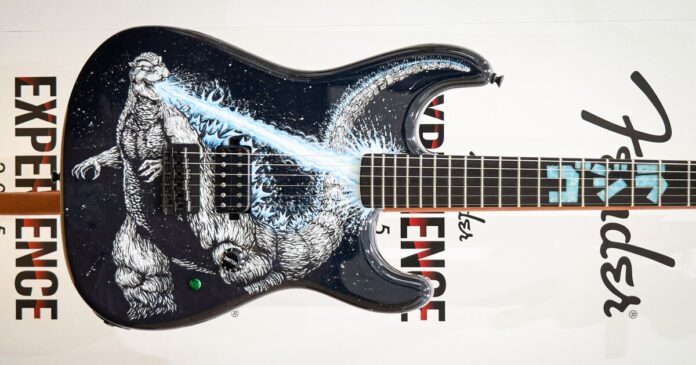Godzilla is in the building. And the building is Fender Flagship Tokyo, the US brand’s temple to the guitar that opened in 2023 in the heart of Harajuku, and is on track to welcome its millionth visitor early next year.
Over ominous, throbbing music, the lights start flashing, the tension starts building, and then, finally, Godzilla enters from stage right. Okay, it’s obviously some poor guy in a Godzilla suit and he only stands about two metres tall. But, hey, he’s not actually the star of this show.
Media from Japan, China, the US, UK and Australia, along with over 40,000 attendees, have assembled in Tokyo for a three-day celebration dubbed Fender Experience 2025, with new series launches, artist and master builder talks, guitar workshops and live shows across three venues. One of the key events is the launch of three special edition guitars that celebrate last year’s 70th birthday of two pop culture icons – both the Fender Stratocaster and Godzilla were born in 1954.
Fender
Indeed, one of these guitars – the Fender Custom Shop Limited Edition Masterbuilt Godzilla Stratocaster – is so limited edition that only one currently exists, and it costs an eye-watering 5,500,000 yen (around US$36,000). There will possibly be four more made, depending on demand, and then that will be it.
After the launch, the two men responsible for this one-of-a-kind instrument sit opposite me on a couch in a spacious office on the third floor of the flagship, with their baby on a stand next to them. They’re like chalk and cheese.
Andy Hicks is a big, voluble, tattooed dude with long straggly hair and beard. He could be Jason Momoa’s stunt double. He’s a Fender custom shop master builder who lives and works in Los Angeles out of the company’s Corona factory.
Tom Neely is a quiet, trim guy with slicked-back silver hair, and is dressed neatly in black and wears geeky-cool glasses. He’s also from LA, but is an illustrator and comic book artist. He illustrated the New York Times best-seller The Last Book On The Left, created the cult comic book series The Humans, and has designed artwork for The Melvins and Green Day.
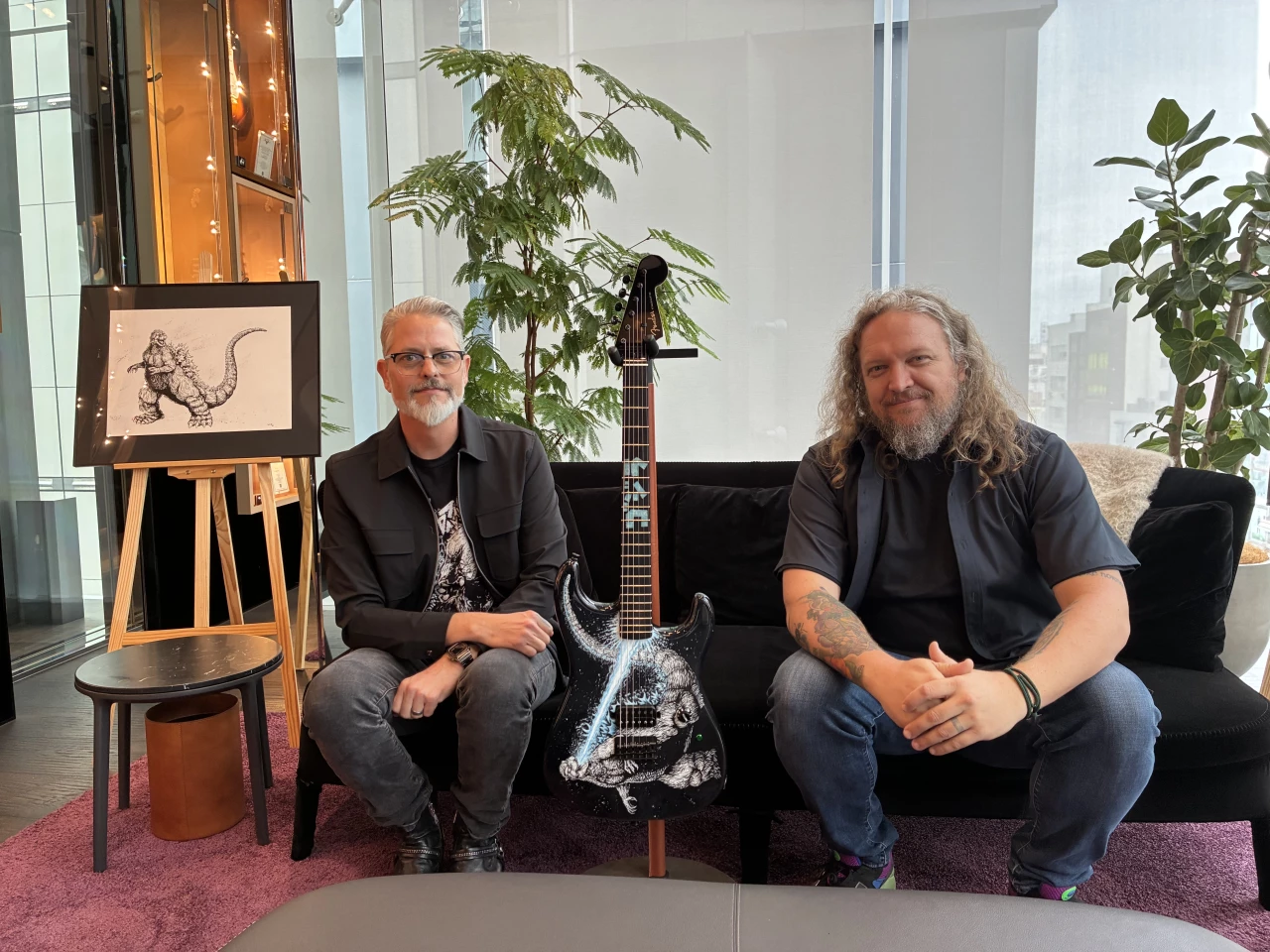
Barry Divola/New Atlas
They may look like they come from different worlds, but both have one major thing in common – a long-standing love of Godzilla.
“He seems to have been in my life for as long as I can remember,” Neely tells me. “I was born in 1975 and I watched him on TV as a kid. The ’70s-era films were on TV every Saturday afternoon in the ’80s. I had the big Shogun Godzilla toy too. Now I’ve got many, many more toys and models. In the ’90s I discovered the Hedorah era through bootleg VHS tapes. I’ve loved every era. He’s just one of the most fun things ever created.”
“I love that he’s changed through the decades,” says Hicks. “He’s sometimes terrifying, he’s sometimes silly. When I was young I found the 1954 version scary. Then fast forward to Godzilla versus Hedorah and he’s doing very silly things. And I like both those extremes. Now I watch the movies with my kids.”
When Hicks was first told that Fender and Toho, the Japanese film company that owns the Godzilla franchise, wanted to collaborate, his eyes lit up. When he found out he was being given carte blanche as far as the design was concerned, his eyes got even wider. He got in touch with two people he knew, one an artist and the other the owner of an art gallery, to ask them about possible candidates to do the artwork. Both of them mentioned Tom Neely.
The two men decided that the front of the guitar would be a rendering of ’90s-era Godzilla. On the back, Neely went to town, incorporating seven different eras of the monster from the last seven decades.
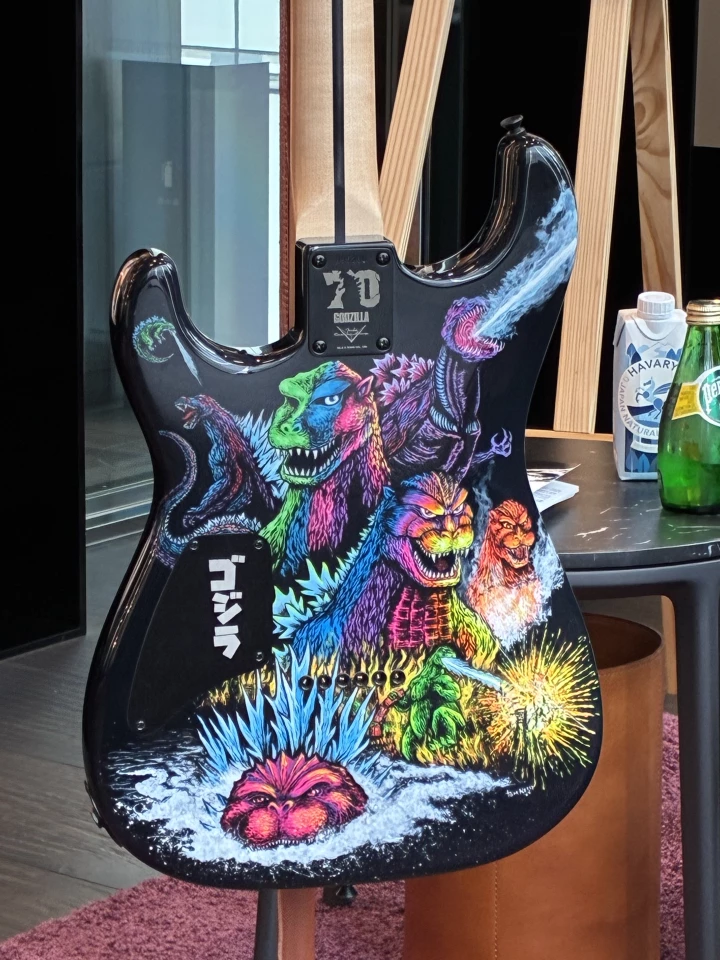
Barry Divola / New Atlas
“I’d only ever hand-painted one guitar before,” he says. “That was in high school when a friend asked me to paint his guitar. And I completely ruined it. So I was nervous about doing this, as I didn’t want to ruin this beautiful master-built guitar Andy had made.”
As for the Strat itself, Hicks took Fender at its word when it came to doing whatever he wanted.
“Designing this guitar was the first time where I felt that I could be designing it just for me,” he says. “I made it with nothing else in mind other than thinking ‘What would I want in a Godzilla guitar?’ Typically, if I’m designing something, the artist or the player take precedence because it’s their dream guitar.”
One design element he did keep at the front of his mind was this: Godzilla was the star here. Subsequently he kept the face of the guitar simple when it came to hardware.
“I decided to have no pickguard, of course, as Godzilla is the focus, and I went with a narrow-spaced hardtail bridge so there would be a ton of real estate on the back for the artwork. We also decided to do a side-mount jack instead of having it on the face.”
Neely adds: “If we’d put it on the front, the jack would come out of here, which wouldn’t have been a good look.” He points to Godzilla’s crotch, and both men laugh.
Editor’s note: Stop right there. Fender may not have had the courage to show this guitar with an input jack in the correct position, but New Atlas knows no such fear. Behold:
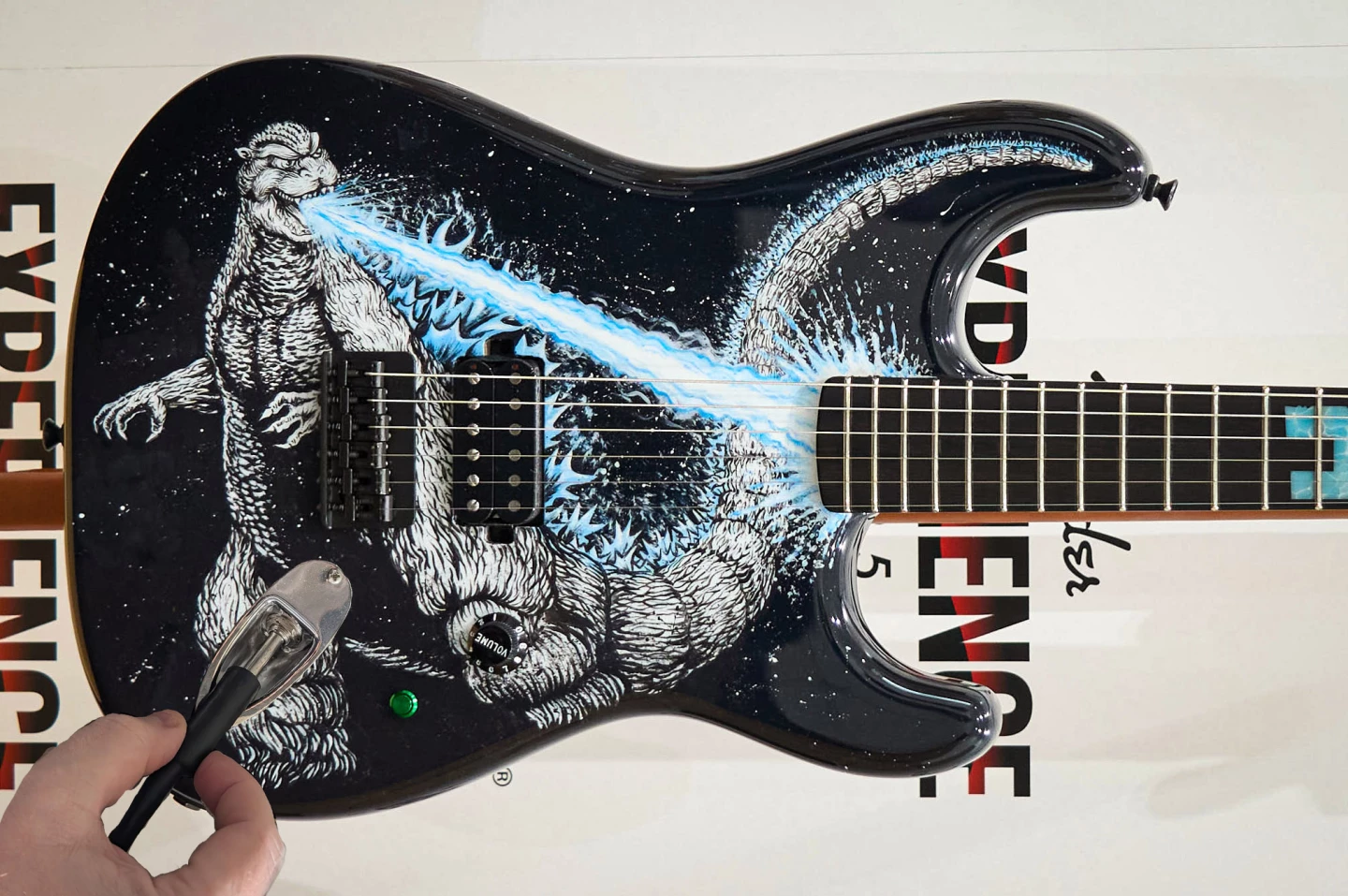
Fender & Loz Blain/New Atlas
Other features include Gotoh vintage-style black tuners, a single Cult Leader humbucker from Sonic Pickups, and the Japanese katakana rendering of Godzilla’s name in blue and white stone on the neck.
But the piece de resistance is a small button on the face of the guitar that, when pressed, activates a chip on a soundboard that elicits the distinctive roar of Godzilla. And it’s the genuine article – Toho sent Fender audio of the actual, official screeching roar used in the movies. We’d place it around circa 1984, and it’s as spine-chilling as you’d expect coming out of a big Fender amp.
With that exclusivity and price point, obviously this guitar is out of range of most mere mortals, so Fender has also produced two Made In Japan Godzilla Strats, available in black (sold exclusively at Fender Flagship Tokyo and via the Fender Japan Official Online Shop) and blue (currently available at official Fender authorised dealers in Japan, and in Australia by the end of the year).
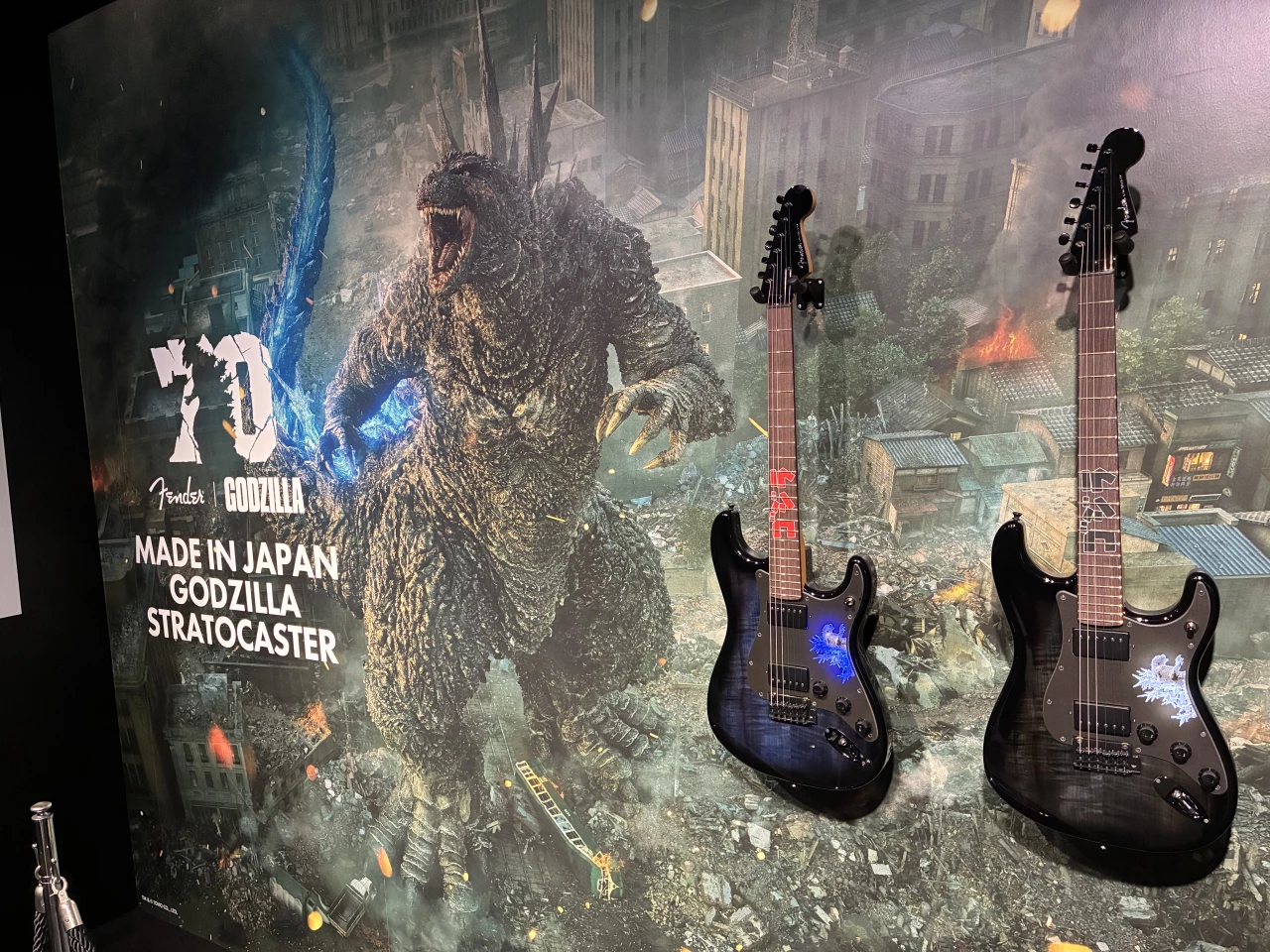
Barry Divola/New Atlas
Both retail for 495,000 yen (about US$3,245) and feature deep gloss finishes and alder bodies capped with myrtlewood, plus a couple of very cool features – Godzilla’s name in Japanese script on the neck, and something called a GLO (gain-linked optics) feature. Essentially the second tone knob engages an onboard distortion circuit, and when it’s activated, a rendering of Godzilla on the pickguard glows and pulsates, the brightness varying depending on the gain levels.
At the launch, former Megadeth axeman (and long-time Tokyo resident) Marty Friedman straps one on and puts it through its paces, cranking out some maximum riffage while lighting up Godzilla on the face of the guitar.
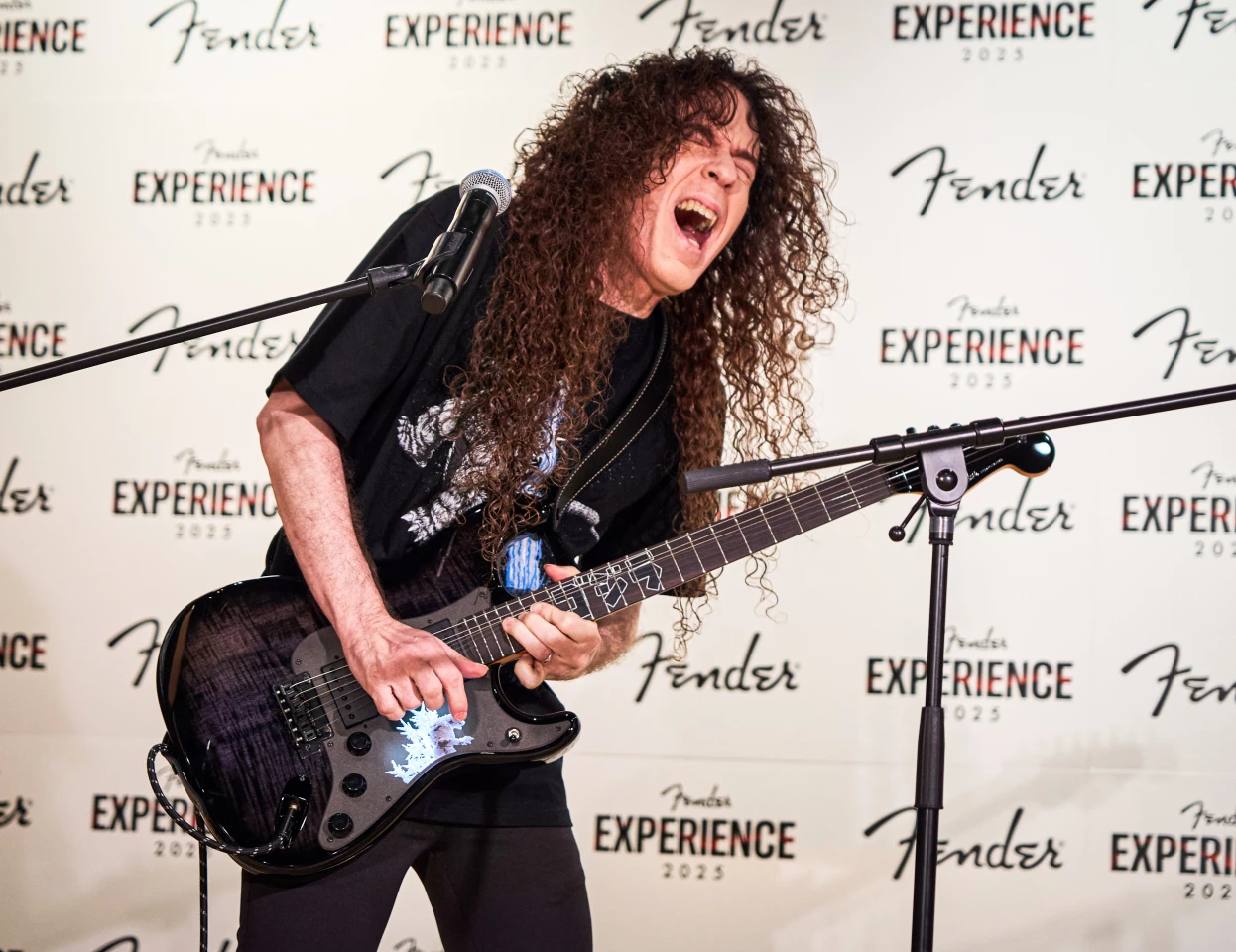
Fender
Western ‘gaijin’ are heading to Japan in record numbers lately – when the cherry blossoms bloomed this April, there were 43% more American tourists in the country than in April 2024. Japanese culture has never been so iconic globally.
So maybe Fender’s onto something here – take one love of guitars, stir in some Godzilla and sprinkle on a little Japanese pop culture to taste. What do you get? A true monster of a souvenir.
Source: Fender


